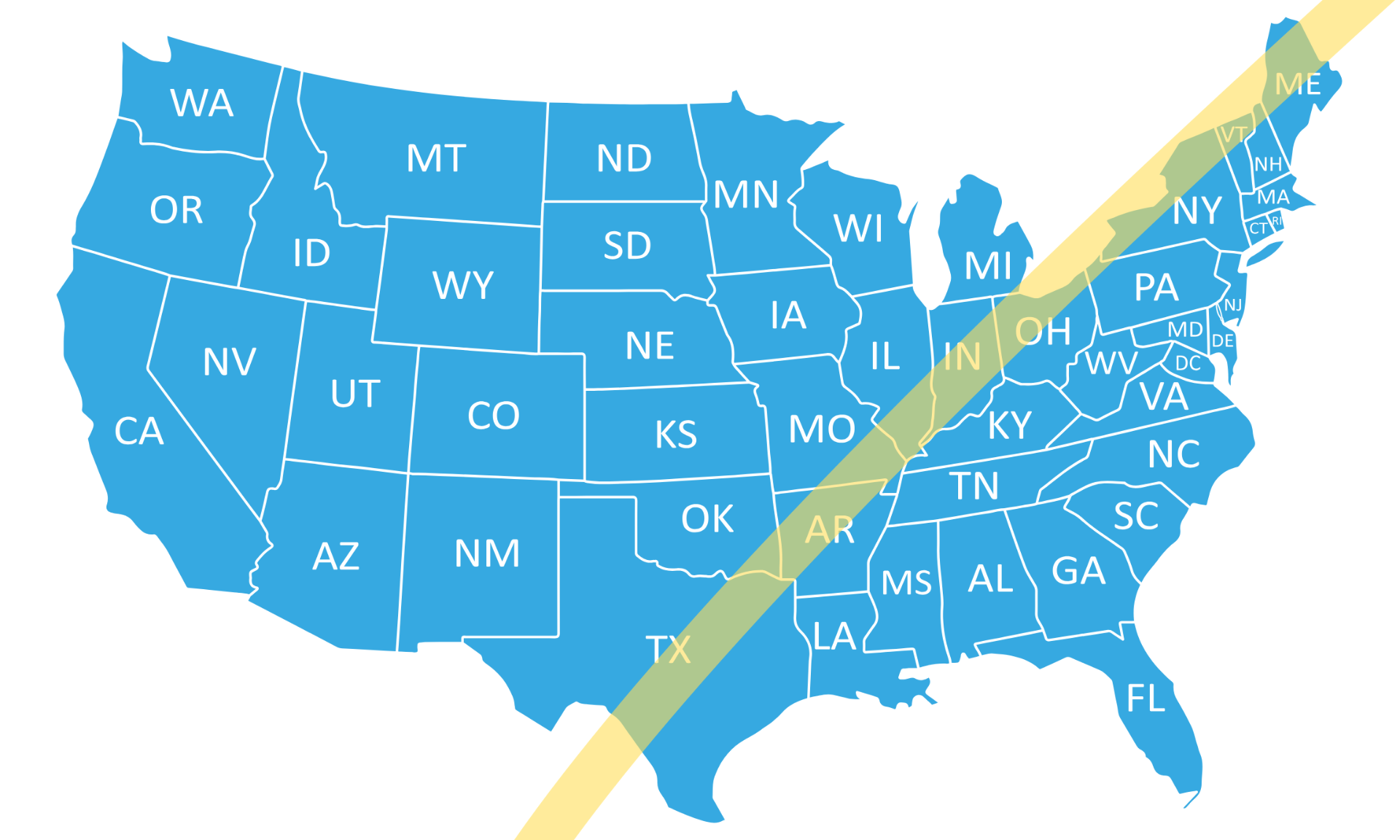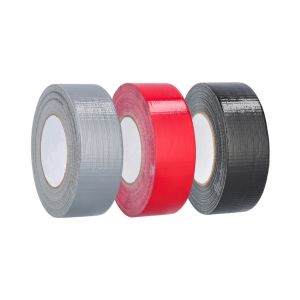On Monday, August 8th, 2024, the moon will pass directly in front of the sun and create a total solar eclipse. Those in the path of totality of the so-called “Great North American Eclipse” will get to witness a potentially once-in-a-lifetime event:

Hopefully, you’ve already stocked up on CE and ISO-certified 12312-2 solar eclipse glasses that block harmful infrared and ultraviolet rays when you watch the eclipse. But there’s more to the eclipse than just what’s in the sky; in fact, there are plenty of phenomena happening all around that you can’t miss out on. With the help of our very own packaging supplies, here are three solar eclipse experiments you can perform to make the most of it.
Pinhole Projection
If you have a flat object with a pinhole cut out of it, you will see a perfectly circular dot of light in the shadow of the object. That is because both the top and bottom of the sun can beam through the pinhole and form the circular dot, as seen in the top half of the image below:

However, as the moon moves in front of the sun in a solar eclipse, it forms a solar crescent that projects a crescent shape through the pinhole, as seen in the bottom half of the above image.
This effect is best captured with a surface that is thin and sturdy, such as our rigid photo mailers. Get yourself an order of our rigid mailers and punch out any pattern of pinholes you desire. You can even spell out your name with pinholes and see how your name turns into little crescents as the eclipse approaches totality.
Sharp & Fuzzy Shadows
Immediately before and after totality, the crescent-shaped sun will impart a strange effect on shadows. In short, the sides of an object that are parallel to the shape of the crescent will retain some sharpness, while the sides that are perpendicular to the crescent shape will be significantly blurrier, as the image below demonstrates:

Normal sunlight acts as an extended source of light, meaning it is a wide light source that illuminates objects with all of its sides – top, middle, and bottom. The shadows we see every day look the way they do because of this extended light source.
When the moon passes in front of the sun and forms a solar crescent, it changes the sun into a linear source of light, a narrower and more concentrated beam of light. Sides of objects in line, or parallel, to this light source appear sharper while the perpendicular sides are much blurrier.
This effect works best with objects with perfect 90° angles. Our rigid photo mailers are once again ideal for this, but most of our mailing envelopes will work just as well.
For more information on this phenomenon, check out this article from the Astronomical Society of the Pacific.
Purkinje Effect
Have you ever noticed that colors in the evening look less…colorful? This is because when our eyes adapt to darker conditions, they become more sensitive to blue colors and less sensitive to reds and greens. This natural anomaly is known as the Purkinje Effect.

You are guaranteed to witness this effect occur during the solar eclipse. To make the most of it, stock up on some red and green tape and create a pattern or design to your heart’s content. Then, on the day of this eclipse, take your red and green creation outside and watch as the colors slowly but surely desaturate as the moon moves in front of the sun.
EclipseSuppliesByMail
Total solar eclipses are a rarity. The next time the path of totality will cross the contiguous United States won’t be until 2045, traveling from California and moving southeast into Alabama and Florida. The northeast, on the other hand, won’t see another total solar eclipse until 2099! Alongside your eclipse glasses, don’t forget to stock up on some of our rigid photo mailers and colored tape to try your hand at some solar eclipse experiments and maximize your once-in-a-lifetime experience.
At the same time, as we watch these gigantic cosmic bodies perform their celestial dance above us, we should take this moment to reflect. Despite our earthly burdens of bills and deadlines, the universe continues on its silent and graceful course. Let us, in this extraordinary moment, take a breath and embrace the feeling of being alive here and now. After all, “the cosmos,” as Carl Sagan has said, “is within us. We are made of star-tuff. We are a way for the universe to know itself.”









